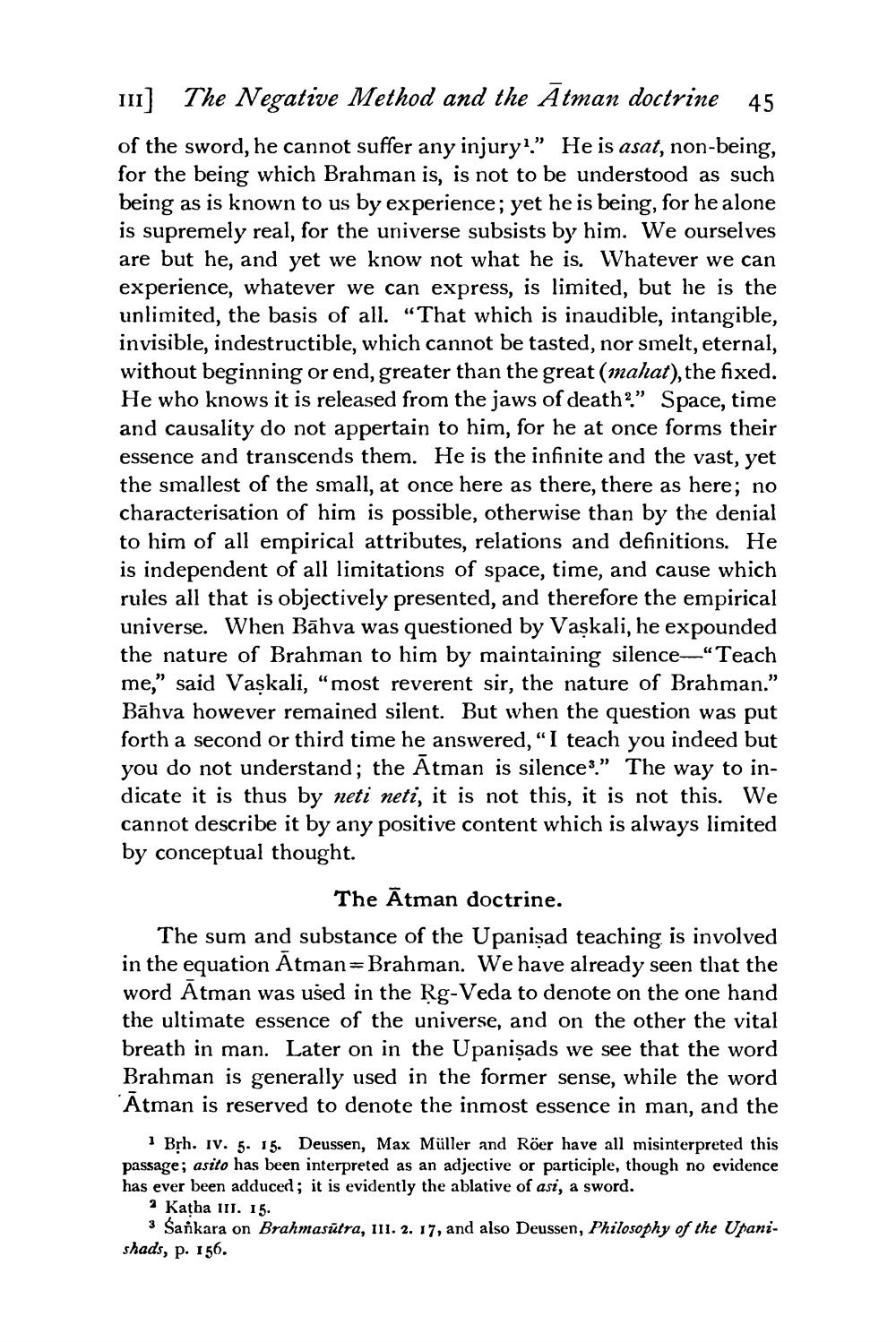________________
III]
The Negative Method and the Atman doctrine 45
of the sword, he cannot suffer any injury1." He is asat, non-being, for the being which Brahman is, is not to be understood as such being as is known to us by experience; yet he is being, for he alone is supremely real, for the universe subsists by him. We ourselves are but he, and yet we know not what he is. Whatever we can experience, whatever we can express, is limited, but he is the unlimited, the basis of all. "That which is inaudible, intangible, invisible, indestructible, which cannot be tasted, nor smelt, eternal, without beginning or end, greater than the great (mahat), the fixed. He who knows it is released from the jaws of death?" Space, time and causality do not appertain to him, for he at once forms their essence and transcends them. He is the infinite and the vast, yet the smallest of the small, at once here as there, there as here; no characterisation of him is possible, otherwise than by the denial to him of all empirical attributes, relations and definitions. He is independent of all limitations of space, time, and cause which rules all that is objectively presented, and therefore the empirical universe. When Bahva was questioned by Vaşkali, he expounded the nature of Brahman to him by maintaining silence-"Teach me," said Vaskali, "most reverent sir, the nature of Brahman." Bahva however remained silent. But when the question was put forth a second or third time he answered, "I teach you indeed but you do not understand; the Atman is silences." The way to indicate it is thus by neti neti, it is not this, it is not this. We cannot describe it by any positive content which is always limited by conceptual thought.
The Atman doctrine.
The sum and substance of the Upanisad teaching is involved in the equation Atman = Brahman. We have already seen that the word Atman was used in the Rg-Veda to denote on the one hand the ultimate essence of the universe, and on the other the vital breath in man. Later on in the Upanisads we see that the word Brahman is generally used in the former sense, while the word Atman is reserved to denote the inmost essence in man, and the
1 Brh. IV. 5. 15. Deussen, Max Müller and Röer have all misinterpreted this passage; asito has been interpreted as an adjective or participle, though no evidence has ever been adduced; it is evidently the ablative of asi, a sword.
2 Katha III. 15.
3 Sankara on Brahmasutra, 111. 2. 17, and also Deussen, Philosophy of the Upanishads, p. 156.




